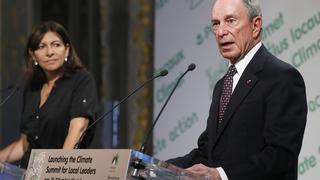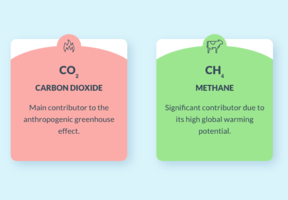COP 21: New Actors Get Involved
Published on 10.23.201510 min read
By sending a powerful signal to cities, regions, businesses and ordinary citizens to continue their efforts to curb emissions and mitigate , the Paris Agreement has formalized a movement that took root a few years ago and which is set to play an important role alongside national governments.

© PATRICK KOVARIK - AFP - The world's largest cities are on the front lines in the battle against global warming (here, Paris mayor Anne Hidalgo and the former mayor of New York City Michael Bloomberg).
The Paris summit has officially recognized the commitment of non-state actors by formally welcoming the role played by regions, businesses, financial institutions and civil society organizations in promoting climate action. The , in its decision, urges the different actors to "enhance their efforts". In particular, it highlights their actions to establish a carbon price.
The various climate action initiatives are registered on the Non-State Actor Zone for Climate Action (NAZCA) portal,1 a website sponsored by the United Nations. They are also included in the Agenda of Solutions promoted by France, host of the COP 21 talks. As of January 2016, more than 2,250 cities, 150 regions and over 2,000 businesses had published their commitments. The portal will be developed so that users can share their experiences and pool their best practices.
Major Cities in the Lead
The most visible actions have been organized and launched by the world's major cities, which control large transportation, housing, and water and waste treatment networks. Initiatives have often been led by prominent media personalities: Arnold Schwarzenegger, the former governor of California, founded the environmental organization R20 Regions of Climate Action, and Michael Bloomberg, the former mayor of New York, created the C40 Cities network.
Businesses Increasingly Involved
In May 2015, 25 business associations representing six million companies from 130 countries attended the Business & Climate Summit in Paris to discuss climate change. The world's largest corporations joined forces in calling for a carbon pricing system, although the details have yet to be ironed out.
In October 2015, the chief executive officers of 10 of the world's largest oil and gas companies comprising the Oil and Gas Climate Initiative (OGCI) made a joint milestone declaration expressing their commitment "to play their part" in achieving a 2°C future2. The companies plan to make significant investments in natural gas (which produces half as much carbon dioxide as ), carbon capture and storage (CCS), and research and development to reduce GHG emissions. No targets have been set. In the summer of 2015, six European even advocated setting up a global carbon pricing system3. Although setting a price for carbon would add to the cost of most companies' products and operations, it would also offer them the key advantage of having greater visibility over future investments.
On an individual basis, a growing number of large companies and mid-sized businesses announced plans to reduce their . Previously accused of greenwashing, these companies are now integrating climate change concerns into their overall development strategies.
In the world of finance, certain funds have begun to modify their portfolios based on their investments' impact on greenhouse gas emissions. According to a study by the U.S.-based financial advisory firm Arabella, 436 institutions and 2,040 investors representing $2.6 trillion in assets, have committed to divest from fossil companies, particularly coal companies4.
World Regions
Many world regions at the infra-state level have also engaged in actions aimed at reducing their emissions. The most spectacular initiative came from California which, together with several other states, created the Western Climate Initiative (WCI) to establish a regional carbon market. The Canadian provinces of Ontario and Quebec joined WCI without having to conclude a bilateral agreement between the United States and Canada.



















